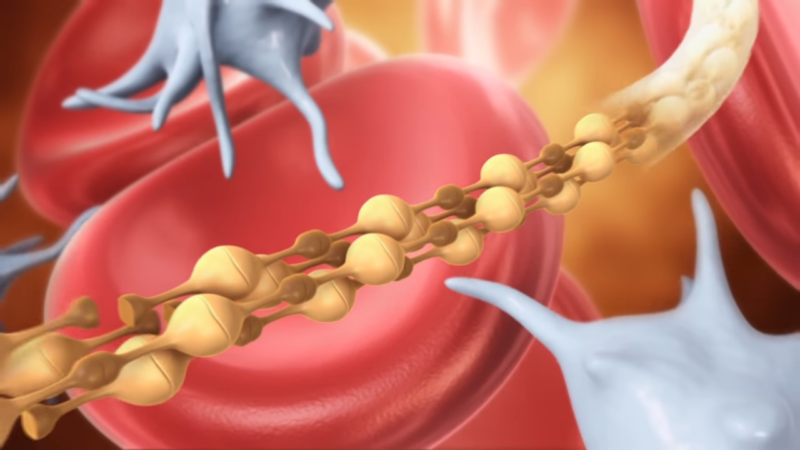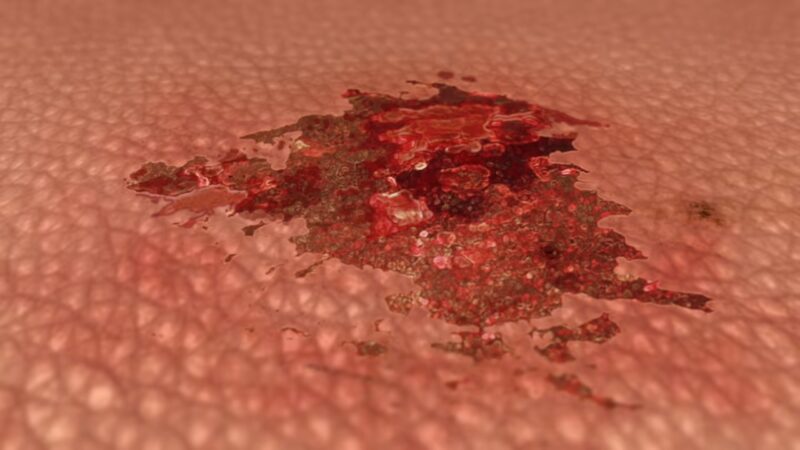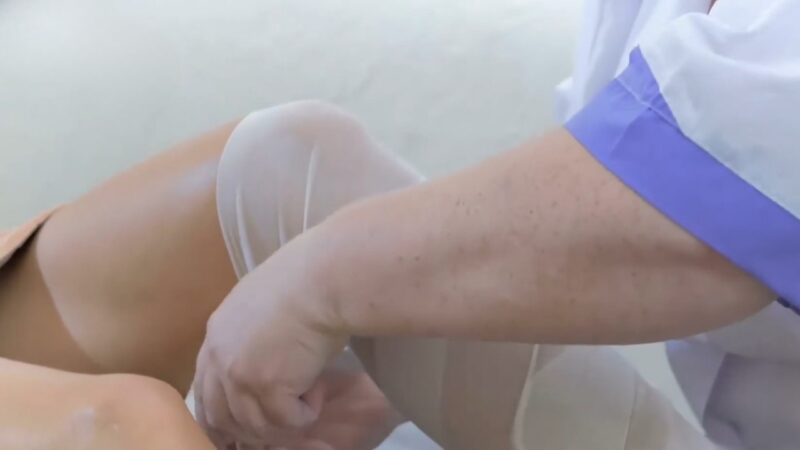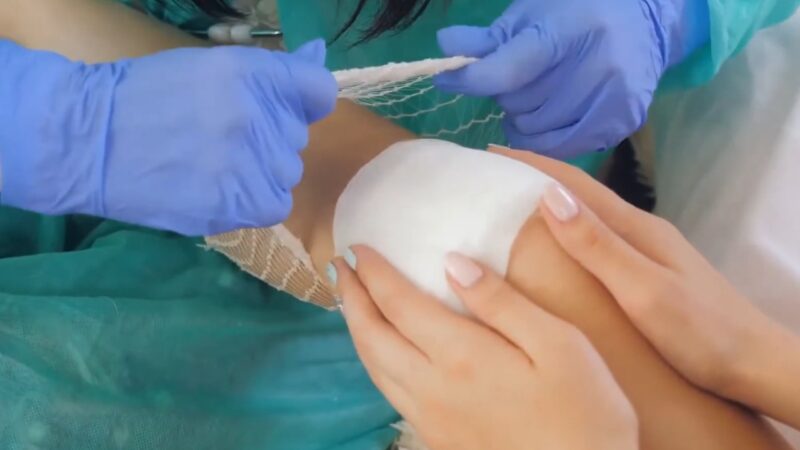Wound care follows a detailed process, with each injury requiring time to heal. The duration varies based on size, depth, and location. Knowledge of wound healing stages aids in setting realistic expectations and providing appropriate care throughout recovery.
Here are the recovery stages a patient must go through while healing.
1. Hemostasis

When the body suffers an injury, its immediate reaction is to stop the bleeding. This crucial first step, known as hemostasis, is where the healing journey begins.
It’s not just about stopping blood loss; it’s about setting the foundation for the body to repair itself. This phase is a complex ballet of biological responses, ensuring that the wound does not bleed excessively and prepares for the next healing stages.
You should also learn more about the ways to speed up the healing process.
Immediate Vessel Response
Right after an injury, the affected blood vessels constrict. This natural response, called vasoconstriction, reduces blood flow to the wound area, helping to lessen bleeding. It’s the body’s quick way to minimize blood loss and start the healing process.
John Maynard says that:
“During this process, platelets come into contact with collagen, resulting in activation and aggregation. An enzyme called thrombin is at the center, and it initiates the formation of a fibrin mesh, which strengthens the platelet clumps into a stable clot.”
Platelets at Work
Platelets, the tiny blood cells, rush to the injury site as first responders. They stick to the edges of the wound and clump together, forming a temporary plug. This plug is crucial for the next step, where a more stable clot forms to seal the wound temporarily.
Clotting Cascade
The real strength of the clot comes from a process involving clotting factors, special proteins in the blood. Triggered by the injury, these proteins work together to turn fibrinogen, a soluble protein, into fibrin, an insoluble one.
Fibrin acts like a net, catching platelets and holding them in place. This creates a firm clot that can withstand the pressure of circulating blood and acts as a barrier against infection.
The Foundation for Healing
Hemostasis is more than just stopping blood loss. The clot that forms also serves as a scaffold for new tissue to grow during the later stages of healing. Without this initial phase, the risk of complications, including excessive bleeding and infection, increases significantly.
2. Inflammation

The second phase after hemostasis is inflammation, a critical period where the body starts to battle against infection and clears out debris from the wound site. This stage is essential for setting up a clean slate for new tissue to develop.
Defense Mechanism Activation
Once bleeding stops, the body shifts focus to defense. White blood cells, including neutrophils and macrophages, flood the area. Their job is to consume any bacteria and remove dead cells, essentially cleaning the wound. This process is vital for preventing infection, which can complicate and slow down healing.
Signs of a Working Immune System
During this phase, the wound might look red, feel warm, and be somewhat painful. These signs indicate that the immune system is active and doing its job. Swelling also occurs as more blood and fluids rush to the site, bringing the necessary cells and nutrients for healing.
Duration and Importance
Inflammation typically lasts a few days, up to a week. Its completion is crucial for the next healing stages to proceed effectively. Without a thorough cleaning process, the risk of infection remains, and the foundation for new tissue growth could be compromised.
Proper care during this phase includes keeping the wound clean and protected. Monitoring for signs of excessive inflammation or infection is crucial. If the area becomes overly painful, excessively swollen, or shows signs of pus, medical attention may be necessary.
3. Proliferation Phase

Following inflammation, the body enters the proliferation phase, where it begins to rebuild the wound with new tissue. This stage is pivotal for covering the wound and restoring skin integrity.
New Tissue Development
During proliferation, the wound starts to fill in with granulation tissue, a new, healthy tissue that appears pink or red and slightly bumpy. This tissue forms the foundation for new skin growth and is rich in collagen and blood vessels, ensuring the wound receives ample nutrients and oxygen.
Wound Contraction
As new tissue forms, the edges of the wound draw closer together, a process known as contraction. This natural mechanism reduces the wound’s size and makes it easier for the skin to seal over the gap. Contraction helps speed up healing by decreasing the area that needs to regrow.
Re-epithelialization
The final step in this phase is re-epithelialization, where new skin cells spread across the wound’s surface, covering the granulation tissue. This new layer of skin starts at the edges and works its way to the center, eventually closing the wound completely.
Care and Monitoring
Proliferation can last from several days to a few weeks, depending on the wound’s size and the individual’s health. Keeping the wound clean and moist during this time is crucial, as it supports cell movement and reduces the risk of scarring. Dressings that maintain a moist environment, like hydrocolloids or hydrogels, are often recommended.
4. Remodeling

After proliferation, the wound enters the remodeling phase, the final stage of healing. Here, the newly formed tissue strengthens and matures over time, improving its structure and function.
“During the maturation of the wound the components of the ECM undergo certain changes. Collagen III, which was produced in the proliferative phase, is now replaced by the stronger collagen I.”
Collagen Remodeling
The key activity in this phase is the rearrangement of collagen within the granulation tissue. Initially, collagen fibers are disorganized, but over time, they align in a more orderly fashion. This process increases the tissue’s strength and flexibility, making the healed area more resilient.
Scar Maturation
A scar forms as the wound closes, marking the area of injury. Initially, scars might appear raised and red but gradually fade to become flatter and lighter in color. The maturation of a scar is a slow process and can take from several months to years, depending on the wound’s severity and the individual’s health.
Long-term Care
Even after a wound seems to have healed, the remodeled tissue remains less robust than the original skin. It contains fewer blood vessels and lacks sweat and oil glands, making it more susceptible to damage. Protecting the area from excessive sun exposure and avoiding stress on the scar can help improve its appearance over time.
FAQs

Do Wounds Heal Faster Covered or Uncovered?
Wounds heal faster when they are covered with a bandage or dressing that keeps them moist and prevents infection. Leaving a wound uncovered may dry out the skin and slow down the healing process.
What Is a Cut that Won’t Heal?
A cut that won’t heal is a chronic wound that does not improve within four weeks or completely heal in eight weeks. It may be caused by diabetes, poor blood circulation, infection, or other factors. A cut that won’t heal needs medical attention to prevent complications.
How Long Does a Cut Take to Heal?
The healing time of a cut depends on its size, depth, location, and how well it is cared for. A small, shallow cut may heal in a few days, while a large, deep, or infected cut may take weeks or months to heal. A cut may leave a scar that fades over time.
How to Clean a Wound?
To clean a wound, wash your hands with soap and water, and wear gloves if possible. Rinse the wound with clean water to remove dirt and debris. Use a soft cloth and mild soap to gently clean around the wound. Do not put soap or antiseptic in the wound. Apply an antibiotic cream or ointment and cover the wound with a sterile dressing or plaster.
Last Words
Wound healing is a detailed process that requires time and proper care. Each stage plays a crucial role in ensuring a complete recovery.
By understanding what happens at each step and how to support the body’s natural healing abilities, individuals can help speed up their recovery and reduce the chances of complications. Patience and attentive care are key to navigating the healing journey successfully.

